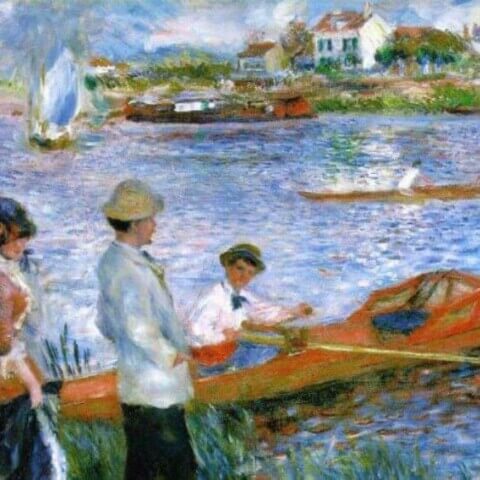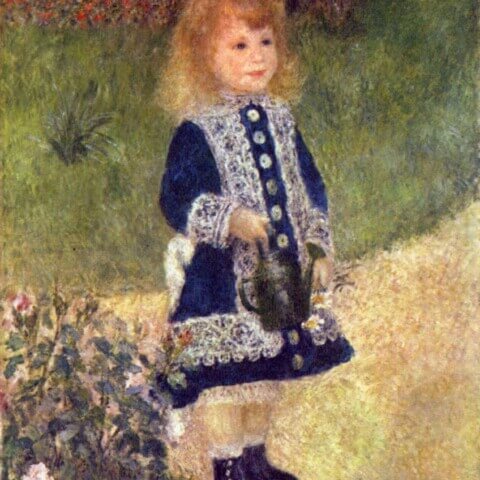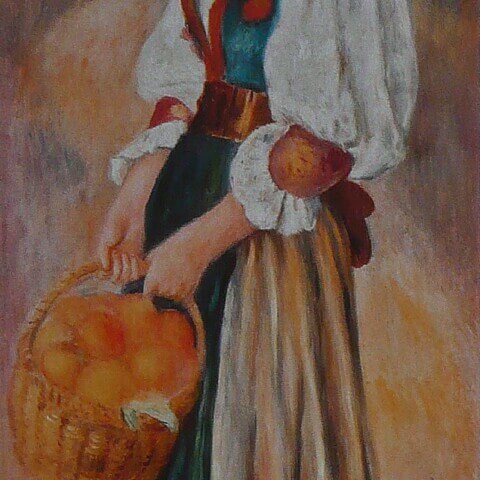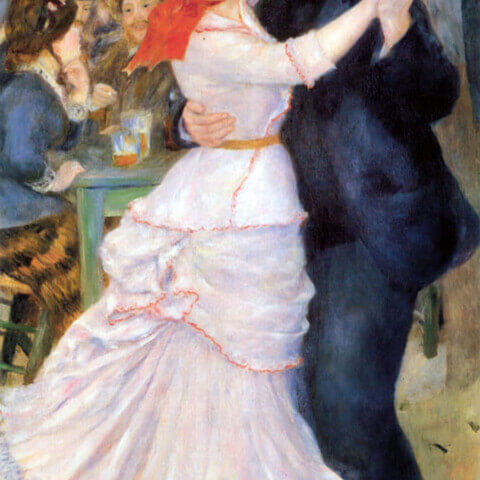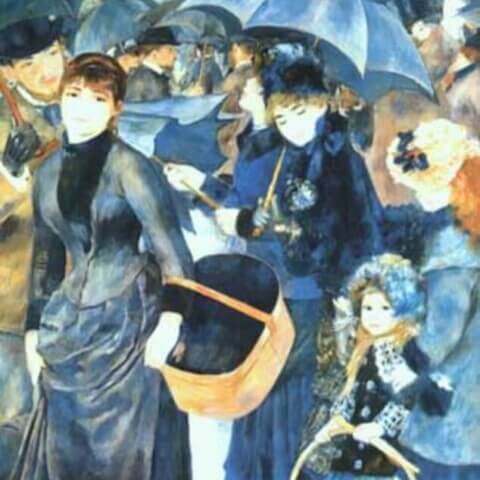Pierre Auguste Renoir
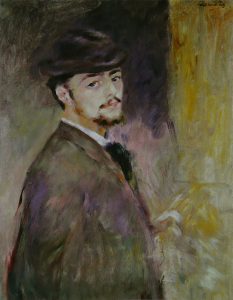
Pierre-Auguste Renoir (1841–1919) was a prolific French artist who was a leading figure in the development of the Impressionist style. His artworks, celebrated for their vibrant light and saturated color, often depict intimate and candid moments of leisure, emphasizing the human figure in various settings. Renoir’s application of saturated paint in broad brushstrokes, combined with his innovative use of natural light, effectively captures the luminosity and transience of each scene. His work is notable for its exuberant use of color and its focus on the joyous and sensual aspects of life.
Born in Limoges, France, Renoir’s family moved to Paris when he was young, where he began painting in porcelain factories before enrolling in the Ecole des Beaux-Arts and studying under Charles Gleyre. It was here where he met future fellow impressionists like Monet, Sisley, and Bazille. They began to paint en plein air, or outdoors, to observe and capture natural light and color more accurately—a hallmark of Impressionism.
Renoir is particularly famous for his contribution to the Impressionist movement, a radical art movement of the 1870s and 1880s. He participated in the first Impressionist Exhibition in 1874 and several subsequent ones. His works like “Dance at Le moulin de la Galette,” “The Swing,” and “Luncheon of the Boating Party” have become iconic examples of Impressionist art and are appreciated worldwide.
However, in the later stage of his career, his art took a new direction, known as his ‘Ingres’ period, where he drew inspiration from classical art and incorporated it with his existing style, a departure that drew both criticism and admiration.
Renoir’s contribution to the art world remains undisputed. His works continue to be studied, exhibited, and cherished globally for their unique combination of vivacious energy, tender intimacy, and masterful use of light and color. He is recognized not just for defining the Impressionist style but also for his role in bridging the gap between traditional and modern art.


